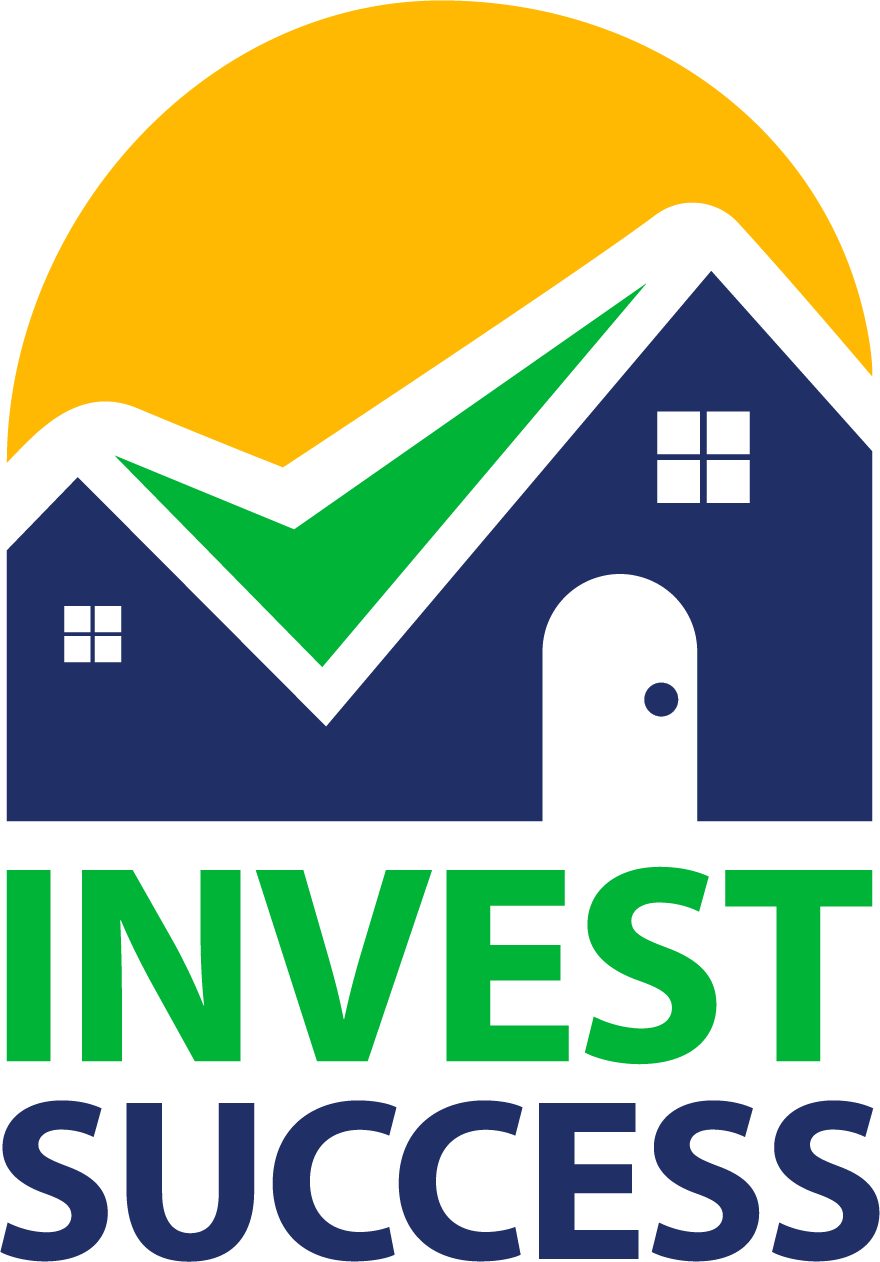Invest Success Blog
Helping You Learn to Master Real Estate Investing in Colorado!

Finding Capital
When I sit down and talk with people who want to start investing in real estate or those who want to take their real estate investing to the next level. I usually ask them a few questions. The first question I usually ask them is what do they want to accomplish with real estate, or what are their goals and why? Every investor needs to know why they are investing and what goal they are trying to achieve. Second, I ask them questions about what resources they have to work with. We all have certain resources that we need to mind when investing in real estate. How much time do you have to devote to investing? How much risk tolerance do you have? How much understanding do you have on the fundamentals of real estate investing? How much capital do you have access to? It’s this last question that I want to focus on. Most people I sit down with don’t realize where they can access capital for investing and don’t realize how much capital they have access to.

Did you realize you have an abundance of capital that is just waiting for you to tap into? But first, let’s discuss briefly what some of the basic strategies and tools that real estate investors use for their investing. For some of these strategies that I’m going to touch on, there are ways to invest with little to no capital at all. This is what many real estate “guru’s” will tell you when you are first starting out your real estate investing journey. Although this statement can be theoretically true, any seasoned investor can tell you that these types of deals are few and far between, especially deals that require access to no capital. Let’s dive into it.
Fix and Flip
With the popularity of fix and flip shows on TV this strategy has gained in popularity. These shows depict an investor that goes into a distressed property and is able to do some renovations to look like a new and updated house. Not only that but they show the investor making a hefty profit at the end. Fix and flips are a great strategy for capital generation. The downside is that you have to continue to find more deals to generate more capital. You also need to have access to capital in order to purchase, renovate, carry the interest and closing costs. Also, going through the fix and flip process isn’t as glamorous as they show on TV, you need to do a lot of problems solving. But if done right, this strategy can be very rewarding to see the transformation of a property and to see a large lump some of money enter your bank account.
Buy and Hold
This strategy is a more traditional strategy of buying a property that you then can lease or rent out to a tenant. In order to purchase the property you will need some capital for the down payment and possibly some for any renovations that need to be made. This strategy is typically used for the benefits of long term cash flow, appreciation, depreciation tax benefits, and building up equity. Any true real estate investors goal should be to acquire buy and holds for their portfolio. These investments usually require an investor to keep capital tied up in the property for a longer period of time.
Additional Strategies
There are many more investing strategies that a real estate investor has in their tool belt as well, but they can all pretty much fit into these two categories. Strategies like wholesaling which gets houses under contract and then selling that contract to an end buyer can fall into the flipping or capital generation category.
A strategy like wholesaling may not require as much capital or risk as fix and flipping, but there is capital needed to hold the contract, market for properties, and other business expenses associated with a marketing type business. Strategies like lease options, creative financing, notes, etc. can fall in the buy and hold categories. These strategies are utilized for longer term investing and gains in the longer term. There are pros and cons to any strategy.
So with any strategy that you decide to utilize in your real estate investing, you will want to have access to some working capital, just like any business. Where do I find the capital? As mentioned earlier, everyone has access to an abundance of capital resources, they just may not realize they do. So lets talk about finding capital.
Where You Can Find Capital

Cash
Many new investors look at their savings or checking accounts to see how much capital they have to invest. Some people have saved up quite a bit of cash over time in their savings and checking accounts. Cash is the easiest and least expensive form of capital that an investor can use in their investing, but for most investors, cash is a rare commodity. With living expenses, other investments, and other life demands that occur the amount of cash that someone has is usually limited.
Equity
Many people don’t realize that they can use the equity in their house to invest with. If you own a house that you have equity in, you can do a cash out refinance and get a chunk of cash that you can use to invest with. A tool I like even more is a HELOC, home equity line of credit. Many people use a HELOC to make improvements on their own property, but many new investors don’t realize that you can use that HELOC to invest in other properties too. One great aspect of a HELOC is that you only have to pay interest on it, when you use it. Most peoples equity in their houses are making 0% for them, but if you learn how to use it for real estate investing it can be a really cheap way of accessing capital for assets that can generate a much larger return then what you would pay in interest to use it. Just be careful using a HELOC too long term in an investment, since its interest is adjustable.
Retirement
Another misunderstood and underutilized tool out there that the general public doesn’t know about is their retirement account or someone else’s retirement account. Most people’s retirement accounts are tied to the stock market in one way or another. If you or someone that you know are not happy with the returns that they are getting or maybe the fees that they are being charged by their retirement plan custodian, they can have more control over their investments by switching their account to a self-directed custodian. This is a fairly easy process and it allows the investor to have more control over what their investments are doing instead of relying on someone else to manage their fund. One of the investments that you can use them for is investing in real estate. You can invest in a fix and flip (which can be tricky, but doable) or build your portfolio through buy and holds using your self-directed account. Not only that but people can loan the capital in their account to other investors and earn a return that way as well. Whether that is your account getting monthly interest or a cut of the deal or someone else lending you their capital to do a deal, it is a great source of capital to invest with. Just be careful and do your research on what follows IRS guidelines, your self-directed custodian should be able to give you that information.
OPM or Lenders
To maximize the capital that you have by leveraging other peoples money (OPM) or using capital from lenders is something every investor should be aware of before they start investing in real estate. If you want to stretch the capital that you have or lack capital that you have, you’ll want to get in touch with some lenders. It doesn’t hurt to get a hold of a few banks or mortgage brokers to see what you may qualify for. Usually more traditional lenders will have longer term mortgage products that may be of use for you to build your portfolio of rentals. Just make sure they don’t do a hard pull of your credit when you talk with them, because it can hurt your credit score. I’ve found that it is good to be straight forward and honest about your income and where your income comes from and what kinds of debts that you have so they can get a picture of if they can even help you find a loan product that will work for you and your goals. Remember that the people you are talking to are salespeople as well, so they will try to sell you on their products even if you don’t qualify. That is why I like to lay it all out there so I don’t waste mine or their time. Mortgage brokers may have more variety in loan products that you can use as an investor and they may be more creative to find a loan solution for you, especially if they are an investor themselves.
More Options
Other lenders that you will want to contact are hard money lenders. These lenders will lend based on the asset. So they will look more carefully at the asset then your personal finances when deciding to issue a loan. They also tend to be shorter term, higher interest loans, that have a fee to originate the loan (also known as points). This capital is more expensive to access but it tends to be quicker and easier to use. So these loans tend to be good to use for fix and flips or if you are utilizing the BRRRR (buy, renovate, rent, refinance, repeat) strategy to build your portfolio. Just make sure you work into your numbers how much you will need to pay to the lender as part of your investment.
Another source of OPM is your current or future network. Building trust goes a long way to access this capital, but it is a great source of capital to maximize your return on investment (ROI). If you know of anyone that has access to any of the capital sources that was previously mentioned in this document, you can see if they would like to invest that capital with you, backed by your real estate investments. A great way of getting started with the conversation is getting a feel of what people have access to through asking questions. What kinds of returns are they currently getting with their capital? How much of a return would they like to be making? What if you could get them a higher return backed by real estate? You may need to educate them on what you have learned from this document, because they may not realize that they have more access to capital then they realize as well. And then you can continue to educate them on how they can use these different sources of capital they have to increase their returns through investing with you. If they seem like they are not interested in the conversation, move on, but if you peaked their interest there may be potential there for them to be a private lender or a potential business partner in the future.
Learn More About Finding Capital
Just like any endeavor, there is only so much that can be covered in a document like this, but hopefully it is a great start for you to start thinking about what sources of capital you have access to for your real estate investing. If you would like more information or guidance on what was discussed in this document, feel free to contact us or give us a call at 303-338-8000.

Finding Capital
When I sit down and talk with people who want to start investing in real estate or those who want to take their real estate investing to the next level. I usually ask them a few questions. The first question I usually ask them is what do they want to accomplish with real estate, or what are their goals and why? Every investor needs to know why they are investing and what goal they are trying to achieve. Second, I ask them questions about what resources they have to work with. We all have certain resources that we need to mind when investing in real estate. How much time do you have to devote to investing? How much risk tolerance do you have? How much understanding do you have on the fundamentals of real estate investing? How much capital do you have access to? It’s this last question that I want to focus on. Most people I sit down with don’t realize where they can access capital for investing and don’t realize how much capital they have access to.

Did you realize you have an abundance of capital that is just waiting for you to tap into? But first, let’s discuss briefly what some of the basic strategies and tools that real estate investors use for their investing. For some of these strategies that I’m going to touch on, there are ways to invest with little to no capital at all. This is what many real estate “guru’s” will tell you when you are first starting out your real estate investing journey. Although this statement can be theoretically true, any seasoned investor can tell you that these types of deals are few and far between, especially deals that require access to no capital. Let’s dive into it.
Fix and Flip
With the popularity of fix and flip shows on TV this strategy has gained in popularity. These shows depict an investor that goes into a distressed property and is able to do some renovations to look like a new and updated house. Not only that but they show the investor making a hefty profit at the end. Fix and flips are a great strategy for capital generation. The downside is that you have to continue to find more deals to generate more capital. You also need to have access to capital in order to purchase, renovate, carry the interest and closing costs. Also, going through the fix and flip process isn’t as glamorous as they show on TV, you need to do a lot of problems solving. But if done right, this strategy can be very rewarding to see the transformation of a property and to see a large lump some of money enter your bank account.
Buy and Hold
This strategy is a more traditional strategy of buying a property that you then can lease or rent out to a tenant. In order to purchase the property you will need some capital for the down payment and possibly some for any renovations that need to be made. This strategy is typically used for the benefits of long term cash flow, appreciation, depreciation tax benefits, and building up equity. Any true real estate investors goal should be to acquire buy and holds for their portfolio. These investments usually require an investor to keep capital tied up in the property for a longer period of time.
Additional Strategies
There are many more investing strategies that a real estate investor has in their tool belt as well, but they can all pretty much fit into these two categories. Strategies like wholesaling which gets houses under contract and then selling that contract to an end buyer can fall into the flipping or capital generation category.
A strategy like wholesaling may not require as much capital or risk as fix and flipping, but there is capital needed to hold the contract, market for properties, and other business expenses associated with a marketing type business. Strategies like lease options, creative financing, notes, etc. can fall in the buy and hold categories. These strategies are utilized for longer term investing and gains in the longer term. There are pros and cons to any strategy.
So with any strategy that you decide to utilize in your real estate investing, you will want to have access to some working capital, just like any business. Where do I find the capital? As mentioned earlier, everyone has access to an abundance of capital resources, they just may not realize they do. So lets talk about finding capital.
Where You Can Find Capital

Cash
Many new investors look at their savings or checking accounts to see how much capital they have to invest. Some people have saved up quite a bit of cash over time in their savings and checking accounts. Cash is the easiest and least expensive form of capital that an investor can use in their investing, but for most investors, cash is a rare commodity. With living expenses, other investments, and other life demands that occur the amount of cash that someone has is usually limited.
Equity
Many people don’t realize that they can use the equity in their house to invest with. If you own a house that you have equity in, you can do a cash out refinance and get a chunk of cash that you can use to invest with. A tool I like even more is a HELOC, home equity line of credit. Many people use a HELOC to make improvements on their own property, but many new investors don’t realize that you can use that HELOC to invest in other properties too. One great aspect of a HELOC is that you only have to pay interest on it, when you use it. Most peoples equity in their houses are making 0% for them, but if you learn how to use it for real estate investing it can be a really cheap way of accessing capital for assets that can generate a much larger return then what you would pay in interest to use it. Just be careful using a HELOC too long term in an investment, since its interest is adjustable.
Retirement
Another misunderstood and underutilized tool out there that the general public doesn’t know about is their retirement account or someone else’s retirement account. Most people’s retirement accounts are tied to the stock market in one way or another. If you or someone that you know are not happy with the returns that they are getting or maybe the fees that they are being charged by their retirement plan custodian, they can have more control over their investments by switching their account to a self-directed custodian. This is a fairly easy process and it allows the investor to have more control over what their investments are doing instead of relying on someone else to manage their fund. One of the investments that you can use them for is investing in real estate. You can invest in a fix and flip (which can be tricky, but doable) or build your portfolio through buy and holds using your self-directed account. Not only that but people can loan the capital in their account to other investors and earn a return that way as well. Whether that is your account getting monthly interest or a cut of the deal or someone else lending you their capital to do a deal, it is a great source of capital to invest with. Just be careful and do your research on what follows IRS guidelines, your self-directed custodian should be able to give you that information.
OPM or Lenders
To maximize the capital that you have by leveraging other peoples money (OPM) or using capital from lenders is something every investor should be aware of before they start investing in real estate. If you want to stretch the capital that you have or lack capital that you have, you’ll want to get in touch with some lenders. It doesn’t hurt to get a hold of a few banks or mortgage brokers to see what you may qualify for. Usually more traditional lenders will have longer term mortgage products that may be of use for you to build your portfolio of rentals. Just make sure they don’t do a hard pull of your credit when you talk with them, because it can hurt your credit score. I’ve found that it is good to be straight forward and honest about your income and where your income comes from and what kinds of debts that you have so they can get a picture of if they can even help you find a loan product that will work for you and your goals. Remember that the people you are talking to are salespeople as well, so they will try to sell you on their products even if you don’t qualify. That is why I like to lay it all out there so I don’t waste mine or their time. Mortgage brokers may have more variety in loan products that you can use as an investor and they may be more creative to find a loan solution for you, especially if they are an investor themselves.
More Options
Other lenders that you will want to contact are hard money lenders. These lenders will lend based on the asset. So they will look more carefully at the asset then your personal finances when deciding to issue a loan. They also tend to be shorter term, higher interest loans, that have a fee to originate the loan (also known as points). This capital is more expensive to access but it tends to be quicker and easier to use. So these loans tend to be good to use for fix and flips or if you are utilizing the BRRRR (buy, renovate, rent, refinance, repeat) strategy to build your portfolio. Just make sure you work into your numbers how much you will need to pay to the lender as part of your investment.
Another source of OPM is your current or future network. Building trust goes a long way to access this capital, but it is a great source of capital to maximize your return on investment (ROI). If you know of anyone that has access to any of the capital sources that was previously mentioned in this document, you can see if they would like to invest that capital with you, backed by your real estate investments. A great way of getting started with the conversation is getting a feel of what people have access to through asking questions. What kinds of returns are they currently getting with their capital? How much of a return would they like to be making? What if you could get them a higher return backed by real estate? You may need to educate them on what you have learned from this document, because they may not realize that they have more access to capital then they realize as well. And then you can continue to educate them on how they can use these different sources of capital they have to increase their returns through investing with you. If they seem like they are not interested in the conversation, move on, but if you peaked their interest there may be potential there for them to be a private lender or a potential business partner in the future.
Learn More About Finding Capital
Just like any endeavor, there is only so much that can be covered in a document like this, but hopefully it is a great start for you to start thinking about what sources of capital you have access to for your real estate investing. If you would like more information or guidance on what was discussed in this document, feel free to contact us or give us a call at 303-338-8000.

Still have questions?
Invest Success is a 12-month, in-person, mentorship program to help you find, fund, fix, and flip your first investment property.
© Copyright 2024. Invest Success. All rights reserved.





